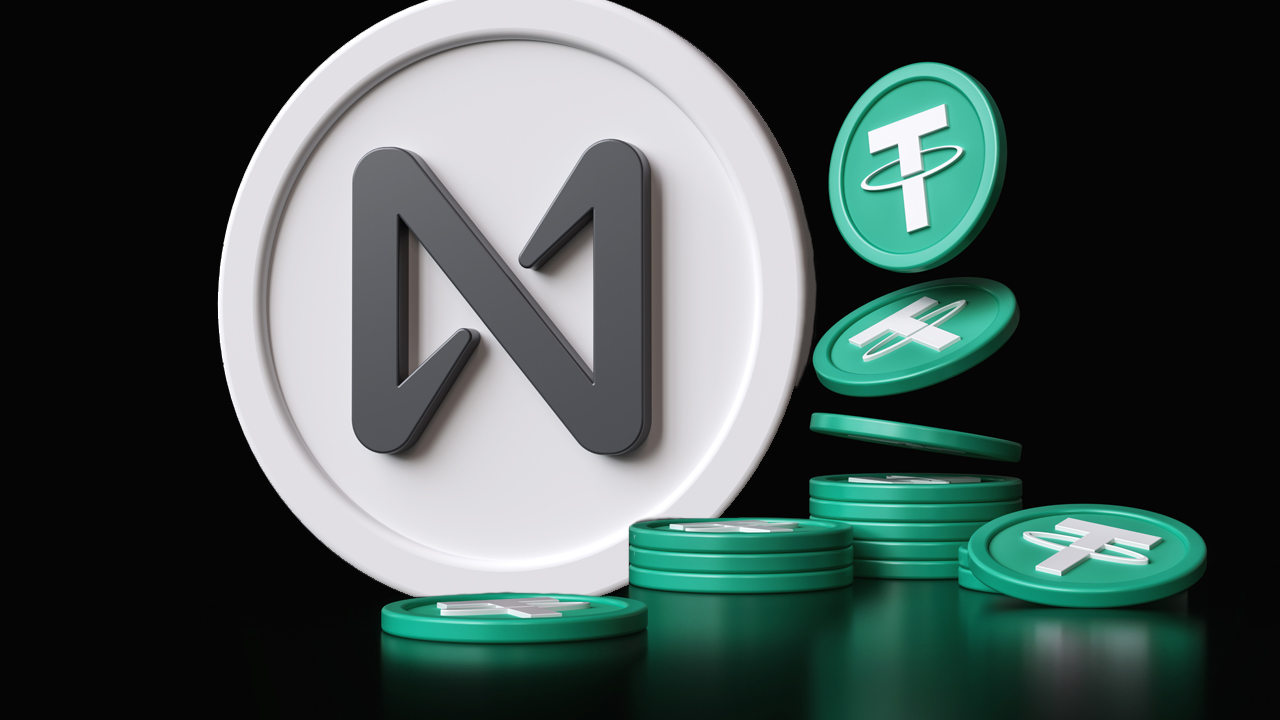On Monday, stablecoin issuer Tether Operations Limited announced that the stablecoin tether is now supported by the Near blockchain network. Following a series of recent implementations, Near will be the 14th blockchain network to host the largest stablecoin by market capitalization.
Tether connects to the Near protocol
Tether has revealed that tether (USDT) is now supported by the Near (NEAR) network, a smart contract blockchain system launched in April 2020. Near’s market cap makes it the 10th largest smart contract token by market cap, and 25th out of all 12,905 cryptocurrencies exists. On September 12, Marieke Flament, CEO of the Near Foundation, said that USDT support on the Near blockchain will play an important role in decentralized finance (defi).
“We are championing initiatives that can bring greater stability to the defi ecosystem and help us advance the mass adoption of Web3,” Flament said in a statement on Monday. “We look forward to seeing what Tether will achieve with the launch of USDT on the Near Network and the important role it will play in shaping the future of finance and the digital economy.”
Close blockchain support will make it the 14th blockchain to host tether (USDT) stablecoins. Of the $153 billion in stablecoin value today, USDT is the largest with a market cap of around $67.7 billion. Tether’s market capitalization is the third largest of today’s 12,905 cryptos, and it has increased by 1.1% over the past 30 days. Tether’s $67.7 billion market cap represents 6.043% of the entire $1.12 trillion crypto economy. Over the past 24 hours, USDT has seen $49.10 billion in global trading volume, surpassing bitcoin’s (BTC) 24-hour global trading volume.
In addition to Near, tether (USDT) is also hosted on Algorand, Avalanche, Bitcoin Cash’s Simple Ledger Protocol (SLP), Ethereum, EOS, Kusama, Liquid Network, Omni, Polygon, Tezos, Tron, Solana, and Statemine. Paolo Ardoino, CTO at Tether, agrees with Flament’s statements, noting that adding stablecoins like USDT will be crucial to the blockchain’s growth.
“We are excited to launch USDT on Near, offering the community access to the first, most stable and reliable stablecoin in the digital token space,” Ardoino said during the announcement. “The Near ecosystem has witnessed historic growth this year, and we believe Tether will be critical in helping it continue to thrive.”
Tether has also branched stablecoin solutions for other fiat currencies. The company recently launched a Mexican peso stablecoin and a crypto-asset pegged to the British pound. In late August, Tether announced that it had hired BDO Italia for monthly insurance reports, and the company also noted that the stablecoin issuer reduced its certificate holdings by 58%.
Tags in this story
13 blockchains, 14 blockchains, Algorand, Avalanche, BCH, BDO Italia, bitcoin cash, British pound, EOS, Ethereum, Kusama, floating network, Marieke Flament, NEAR, near protocol, near protocol (NEAR), Near Tether, omni, Paolo Ardoino, peso, Polygon, pound sterling, Solana, Stablecoin, Stablecoin issuer, stablecoin USDT, Statemine, Tether, Tether stablecoin, tethers, Tezos, tron, USDT
What do you think about Near Protocol supporting stablecoin tether? Let us know what you think about this topic in the comments section below.
Jamie Redman
Jamie Redman is the news editor at Bitcoin.com News and a financial technology journalist living in Florida. Redman has been an active member of the cryptocurrency community since 2011. He has a passion for Bitcoin, open source and decentralized applications. Since September 2015, Redman has written more than 6,000 articles for Bitcoin.com News about the disruptive protocols emerging today.
Image credit: Shutterstock, Pixabay, Wiki Commons
Disclaimer: This article is for informational purposes only. It is not a direct offer or solicitation of an offer to buy or sell, or an endorsement or recommendation of products, services or companies. Bitcoin.com does not provide investment, tax, legal or accounting advice. Neither the company nor the author is directly or indirectly responsible for damages or losses caused or alleged to be caused by or in connection with the use of or reliance on content, goods or services mentioned in this article.



